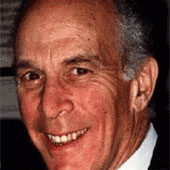Lower Healthcare Costs: Learning From History
How did Presidents Gerald Ford and Jimmy Carter tackle high prices in key sectors of the U.S. economy?
July 31, 2009
How can President Obama lower health care costs?
The answer is the same way Presidents Ford and Carter lowered costs in other economic areas between 1975 and 1980.
Actions to promote competition in other pivotal sectors of the U.S. economy — such as air travel, trucking, telecommunications (remember Ma Bell), energy (natural gas), manufacturing, finance and retail — drove costs out of those industries and has kept inflation in check ever since. Health care costs would yield to the same competitive dynamic.
Trucking is perhaps the best example. Franklin Roosevelt and every president after him had wanted to break the regional "rate bureaus," which, since the 1930s, had allowed trucking companies to fix and inflate prices.
Air carriers and railroads had similar legislatively sanctioned price-fixing arrangements dating from the Great Depression. The companies and their unions had prevailed in earlier battles, but U.S. Presidents Gerald Ford and Jimmy Carter took them on.
The two presidents first forced airlines, then truckers and finally railroads to face competition — stopping price increases in their tracks. They also pushed through reforms to increase competition in energy and telephones.
Republican mythology gives the credit for breaking inflation to Ronald Reagan and the Federal Reserve. The record shows, however, that it was Ford and Carter who took the political heat to break up cozy price-fixing arrangements that were the real culprit.
Carter in 1980 also made the tough decisions that broke the post-war auto and steel oligopolies. Like the health care sector today, these industries produced poor quality cars and steel at high prices, while convincing themselves and others that they were the best in the world.
Presidents Ford and Carter also opened financial markets to more entrepreneurial firms despite fierce opposition from Wall Street.
Their actions made the Northeastern financial establishment face up to competition from strengthened regional banks. They encouraged competitive entrants in the U.S. bond market who financed entrepreneurs and not just Blue Chips. And, they backed a new NASDAQ exchange that helped to finance newcomers and forced the New York Stock Exchange to cut its costs.
Presidents Ford and Carter used every administrative option at hand, so that the legislation they eventually received was only a culmination of their efforts.
What sort of administrative measures did they use? Prices on interstate air routes had been fixed since the 1930s by the Civil Aeronautics Board, and traditionally could only be changed as the result of elaborate, adversarial hearings.
President Ford's chairman of the Civil Aeronautics Board (CAB), John Robson, found ways around this process. He allowed charter airlines more leeway to compete with carriers who had fixed prices on assigned routes. He also permitted existing carriers to cut prices with "super saver" fares, especially on Florida vacation routes.
President Carter's CAB appointee, Fred Kahn went further. He allowed airlines to cut prices up to 50% on many routes, and dared airlines who opposed competition to take him to court.
The airlines and airline unions opposed these steps because they understood that competition would lower prices — but they lost.
President Carter's appointees at the Interstate Commerce Commission (ICC) did similar things to promote competition in trucking. The railroads, also regulated by the ICC, then had to go along or lose almost all of their customers.
Similarly, staff at the Federal Communications Commission used their administrative discretion to allow MCI to challenge the old Ma Bell monopoly, and the courts supported that too.
President Obama should direct his appointees at the U.S. Department of Health and Human Services (HHS) to adopt similar approaches to undercut the local insurance and provider "monopolies." Appointees at HHS and other agencies should be told to stretch existing authorities for Medicare, Medicaid, Tricare (healthcare for the military), the Veterans hospitals and state and federal employee health plans as far as they can be stretched to promote competition.
The administration should steer beneficiaries of these government-financed insurance plans to competitive lower-cost insurers and computerized and networked doctors and hospitals.
Stimulus money for computerized patient records should be spent to favor health care providers who are networked and who coordinate care. Medicare and Medicaid should steer beneficiaries to pharmacies that charge lower prices.
The insurance companies and providers no doubt would take the Obama Administration to court to defend the local monopolies that dominate American health care — insurance rates and payments for procedures that vary by locality and that restrict patients to local doctors. The Administration has to be willing to go to court.
By using Medicare and the other government programs to create competition, the administration will pull bricks out of the already shaky foundation of the high-cost insurance/health care complex. Legislation will be easier and more effective as a result.
Takeaways
Insurance companies and providers would no doubt take the Obama Administration to court to defend the local monopolies that dominate health care. The Administration has to be willing to go to court.
The two presidents first forced airlines, then truckers and finally railroads to face competition — stopping price increases in their tracks.
Actions to promote competition in other pivotal sectors of the U.S. economy drove costs out of those industries and has kept inflation in check ever since.
Fred Kahn allowed airlines to cut prices up to 50% on many routes, and dared airlines who opposed competition to take him to court.
Read previous
Obama's Lost Opportunity
July 30, 2009
